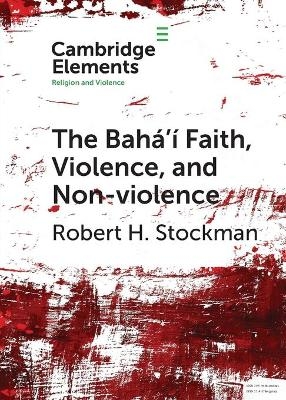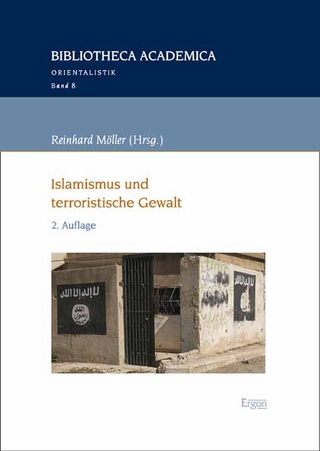
The Bahá'í Faith, Violence, and Non-Violence
Seiten
2020
Cambridge University Press (Verlag)
978-1-108-70627-8 (ISBN)
Cambridge University Press (Verlag)
978-1-108-70627-8 (ISBN)
Both violence and non-violence are important themes in the Bahá'í Faith, but their relationship is not simple. The Bahá'í sacred writings see violence in the world as being a consequence of the immature state of human civilization. This Element explores how Bahá'í scriptures provide a blueprint for building a new culture where violence is rare.
Both violence and non-violence are important themes in the Bahá'í Faith, but their relationship is not simple. The Bahá'í sacred writings see violence in the world – not just against Bahá'ís, but physical and structural violence against everyone – as being a consequence of the immature state of human civilization. The Baha'i community itself has been nonviolent since its founding by Baha'u'llah in the mid nineteenth century and has developed various strategies for responding to persecution nonviolently. This Element explores how their scriptures provide a blueprint for building a new, more mature, culture and civilization on this planet where violence will be rare and nonviolence prevalent.
Both violence and non-violence are important themes in the Bahá'í Faith, but their relationship is not simple. The Bahá'í sacred writings see violence in the world – not just against Bahá'ís, but physical and structural violence against everyone – as being a consequence of the immature state of human civilization. The Baha'i community itself has been nonviolent since its founding by Baha'u'llah in the mid nineteenth century and has developed various strategies for responding to persecution nonviolently. This Element explores how their scriptures provide a blueprint for building a new, more mature, culture and civilization on this planet where violence will be rare and nonviolence prevalent.
1. The forerunner movement: the Bábí faith; 2. The writings of the Báb; 3. The Bábí community and persecution: Mírzá Husayn-`Alí of Núr, Bahá'u'lláh; 4. Other references about violence and nonviolence; 5. Bahá'u'lláh and `Abdu'l-Bahá about oneness and unity; 6. Building unity through organization; 7. The authority of Bahá'í institutions: the Covenant; 8. Consultation; 9. Disciplining members; 10. Persecution of the Bahá'í community; 11. Bahá'í teachings for preventing violence at a societal and global level; 12. Growth and development of the international Bahá'í community, 1892–present; 12. Constructive resilience in Iran: constructive engagement; 13. Conclusion.
| Erscheinungsdatum | 05.08.2020 |
|---|---|
| Reihe/Serie | Elements in Religion and Violence |
| Zusatzinfo | Worked examples or Exercises |
| Verlagsort | Cambridge |
| Sprache | englisch |
| Maße | 180 x 125 mm |
| Gewicht | 880 g |
| Themenwelt | Geisteswissenschaften ► Religion / Theologie ► Weitere Religionen |
| Sozialwissenschaften ► Soziologie ► Spezielle Soziologien | |
| ISBN-10 | 1-108-70627-4 / 1108706274 |
| ISBN-13 | 978-1-108-70627-8 / 9781108706278 |
| Zustand | Neuware |
| Haben Sie eine Frage zum Produkt? |
Mehr entdecken
aus dem Bereich
aus dem Bereich
archäologische Fakten und Fiktionen im Neuheidentum
Buch | Softcover (2023)
Verlag Anton Pustet
24,00 €
Rituale – Rezepte – Übungen
Buch | Hardcover (2024)
Freya (Verlag)
34,90 €


